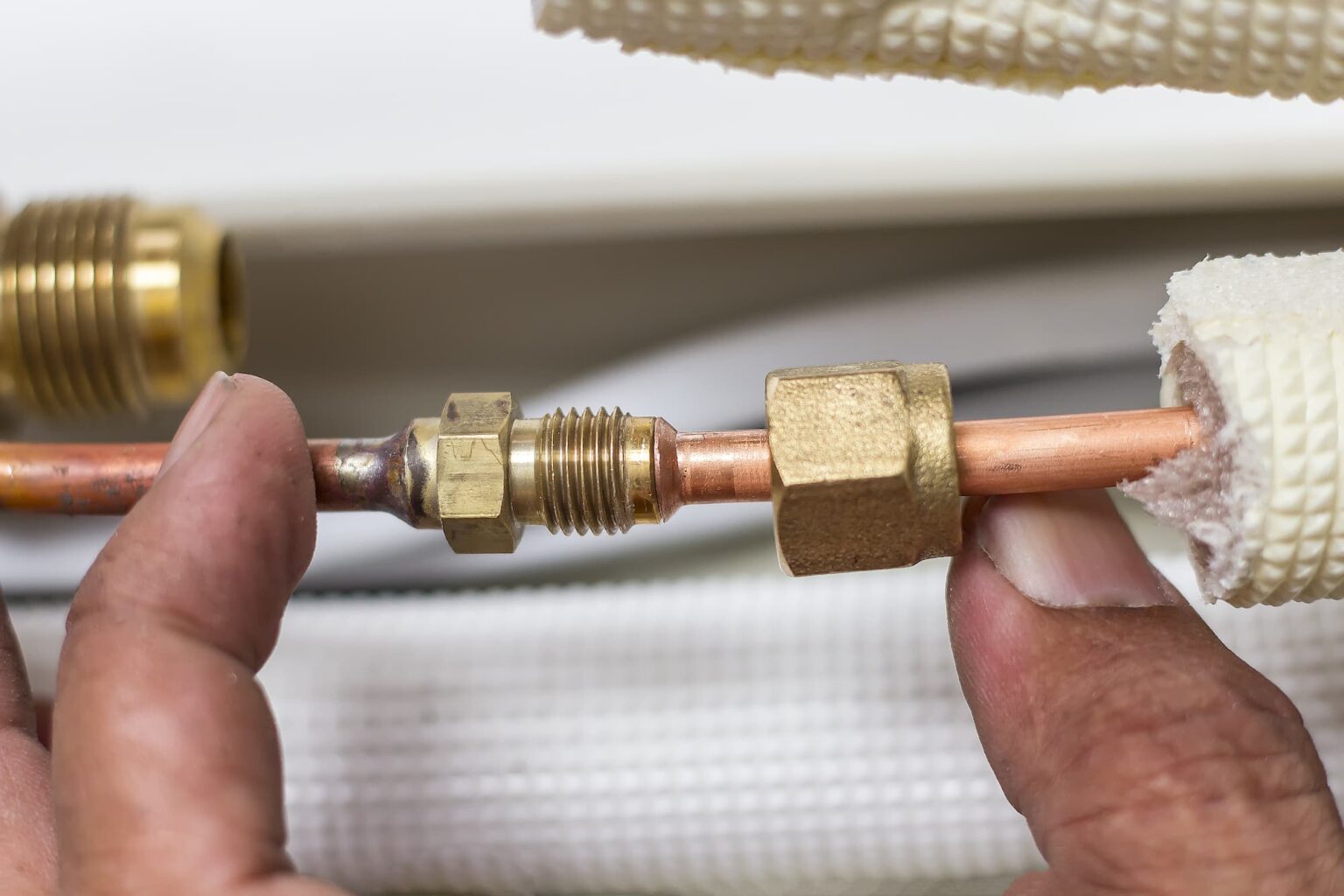Phoenix homeowners looking for a way to enjoy fresh drinking water have no doubt heard of reverse osmosis. Whether you’re looking to install a new system or want to better understand how your current water filtration system works, you’re probably wondering: How does reverse osmosis work? Discover the groundbreaking science and high-tech engineering that all come together to provide you with the clearest, purest water for drinking and use throughout your home.
What Is Reverse Osmosis?
Reverse osmosis is the premier filtration system used in a variety of ways. From recycling, treating wastewater, purifying drinking water, and even desalinating ocean water, reverse osmosis can effectively provide clear water that is safe to drink. Before you understand how this innovative system works, it’s helpful to understand osmosis.
Osmosis is the process by which two bodies of water mix. When water that is more diluted, such as freshwater, meets water that is more concentrated, such as salt water, the freshwater will tend to move toward the water with a higher concentration.
Basically, this means that it is typically very difficult to separate salt and other minerals from water effectively. Osmosis encourages water to continue to mix, rather than separate, so reverse osmosis is necessary to enjoy safe, clean water.
Reverse osmosis requires a semi-permeable membrane. This membrane offers a chance to filter your water one molecule at a time. Think of a semi-permeable membrane as an incredibly small piece of mesh that sifts your water.
Equipped with a semi-permeable membrane, a reverse osmosis filtration system uses energy to pressurize the system and force unfiltered water. This causes the osmosis process to happen in reverse, and you’re left with water that is remarkably free from minerals and contaminants.
This process typically achieves a filtration level of more than 95%, while some systems achieve over 99% filtration. There are many reasons to desire filtered water, but pure, clear water can offer many benefits over water with contaminants, particularly saltwater or water that contains harmful heavy metals.
What Does RO Remove from the Water?
Heavy metals are very harmful to your health. From an increased risk of sickness to long-term, untreatable side effects, it’s critical that you keep you and your family safe from any risk of heavy metals. Dangerous levels of contaminants in your drinking water may not affect the color, taste or smell of your water, so filtration is the best form of protection.
Choose a filter that offers 99% or more effectiveness at removing these harmful contaminants:
- Chromium-6
- Mercury
- Lead
- Chloramine
- Chlorine
- Sediment
Choose a system that is certified to remove all the contaminants on the EPA contaminant list. There are over 100 contaminants that could be in your drinking water, so proper protection is essential.
Lead is a particularly dangerous contaminant. Any amount of lead can lead to long-term effects. You can’t taste, see or smell lead, so have your water tested or install a water filtration system to ensure you and your children are safe from lead exposure.
Industrial chemicals can also be introduced into your drinking water. Chromium-6 and other additives can find their way into your well or city system and cause health issues. Chromium-6, in particular, has been linked to cases of cancer and asthma.
While some other filtration systems are able to remove heavy metals from your water, reverse osmosis is a highly refined way to enjoy the cleanest, safest drinking water. To better understand how this system works, discover the steps it takes to receive pure water today.
Steps to Pure Water
While these systems can come in a wide variety of sizes, shapes, and performance specifications, all reverse osmosis water filtration systems use the same basic steps. From a single faucet in your home to a city-wide filtration plant, water undergoes these steps before it’s ready for drinking and other uses:
1. Pre-filtration
2. Reverse osmosis
3. Drainage
4. Storage
The first round of filtration is called pre-filtration. This step performs many of the basic filtration tasks that other filtration systems use. Larger molecules, sediment, and heavy metals are all cleared in this stage. Most sand and other sediment are removed with a particle filter. After this filter, your water passes through an activated carbon filter. This second filter removes pesticides, heavy metals, chlorine, and minerals. This step not only makes your water safer to drink, but it also removes some of the unpleasant taste, color, and smell.
Next, the actual reverse osmosis process removes even more contaminants. This is where the semi-permeable membrane offers the level of purity that gives you uncomparable results. With a membrane that only allows molecules that fit through the single-micron gaps, it’s an excellent way to remove the remaining bacteria, minerals, and other deposits that may have slipped through the first two filters.
After all of the filtration is complete, your reverse osmosis system uses a discharge to remove flush contaminants away from the filters. The remaining water is moved to a storage tank, where you can use it at your convenience.
Some reverse osmosis systems are designed to be used with a single drinking water faucet. Others offer pure water to your entire home. Whether you choose a smaller system or a larger, convenient model, these steps ensure that your water is the purest you can find.
Benefits of Reverse Osmosis Filtration
While reverse osmosis can protect you from life-threatening heavy metals, there are other excellent reasons to choose a reverse osmosis filtration system for your home. Discover how these dynamic filtration systems can help you save money and enjoy more convenient water for cooking, drinking, and even making ice.
Bottled water is expensive. In just a year, Americans spent over $15 billion on bottled water alone. Save money by enjoying the same level of filtration in your home. Reusable bottles with reverse osmosis water allow you to reduce your plastic use and still enjoy pure drinking water all day long.
Reverse osmosis filters are perfect for cancer patients and other individuals who need to be protected from a wide range of bacteria and other microorganisms. Cryptosporidium and other harmful parasites aren’t easily filtered from your water without the powerful filter.
When you’re cooking with unfiltered water, it can cause your food to taste or smell odd. Chlorine, in particular, can affect the color and taste of your food. Keep your food tasting fresh and your dishes clean with thoroughly filtered water.
When you’re entertaining guests, there’s nothing worse than cloudy, unappealing ice cubes. Not only do these ice cubes look unattractive, but they also melt faster and tend to be softer. Keep your drinks chilled with clear cubes and avoid watery cocktails and soft drinks during your next party or family gathering.
For many homeowners, hard water can contain far too many minerals and sediment to enjoy. Tap water with a high concentration of minerals may not harm your health, but it can have an unpleasant taste, smell and color. For individuals struggling to drink enough water already, poor water quality can make it even more difficult to enjoy proper hydration.
Other Filtration Methods
Reverse osmosis may be the most effective filtration method, but it is far from the only system on the market. In order to understand how this system compares to other types of filtration, here is a quick guide to filtration systems currently on the market.
Activated carbon filters are often used to remove some of the worst contaminants in water. These filters remove heavy metals and chlorine from your water. Of course, one of the first steps in reverse osmosis involves an activated carbon filter, so choosing a system that only utilizes this filter won’t be as effective as the complete reverse osmosis system.
Distillation is another popular way to filter your water. The distillation process involves boiling your water until it evaporates. Once it condenses, it’s collected in a storage tank. It’s another highly effective way to remove all types of harmful contaminants from your water. However, distilling machines are typically bulkier and more expensive than a reverse osmosis water filtration system.
Finally, some homeowners use ultraviolet light to purify their water. UV light exposure is a great way to disinfect your water. However, it won’t remove the sediment and other molecules from your water. It’s also typically a more expensive option than reverse osmosis.
Professional Filtration Installation
There’s nothing more important than clean, filtered water for your health. Whether you’re struggling to drink your recommended amount of water every day because of poor water taste, expensive bottled water, or health concerns surrounding your tap water, a reverse osmosis system can be an affordable and effective way to get the water you need.
At Day & Night Air, our team of professionals can quickly install a reverse osmosis system in your Phoenix home. If you choose an under-the-counter model, we can quickly install a compact reverse osmosis filtration system and connect it to your sink faucet or add a second drinking water faucet. Other filters can be used to provide your entire home with safe, filtered water. A larger reverse osmosis machine can also be installed conveniently to purify your water for use all throughout your home.
If you have any questions regarding reverse osmosis or want an estimate for receiving one of these innovative filters in your home, contact us today to get started. We can install, repair or replace your reverse osmosis system quickly to provide you with the clearest, purest water for cooking and drinking.







